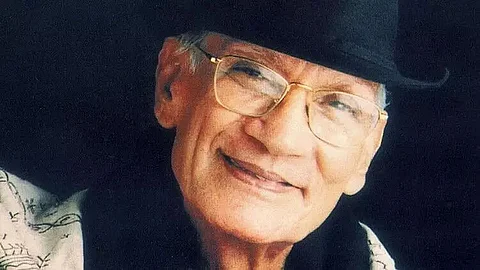
- Home
- Live Blog
- Breaking News
- Top Headlines
- Cities
- NE News
- Sentinel Media
- Sports
- Education
- Jobs

Gautam Ganguly
(gautamganguly2012@gmail.com)
The connoisseurs of music across India and even the world have offered heartfelt tribute on 16th January to OP Nayyar, the legendary music director, on the occasion of his 97th birth anniversary. Despite the passage of time, popularity of OP Nayyar's lilting, foot-tapping compositions have kept soaring encompassing the young, vibrant generations by the immortal tunes. Empirical experiences reveal that the 'dance-friendly', rhythmic compositions of OP Nayyar suit the tastes of fast-pace-loving present generations. Consequently, 'remixed' versions of OP Nayyar songs outscore his equally illustrious contemporary Bollywood colleagues like Shankar-Jaikishan, SD Barman etc.
Superlative perfection in composing songs based on 'horse-beat rhythm' is attributed to OP Nayyar's sky-rocketing popularity in overcoming generation gap syndrome by musical experts . 'Clip-clop, clip-clop', the sound created by the hooves of galloping horses, is typical of his characteristic music. To quote famous music critic Bharadwaj Rangan, 'ghoda-gaadi beat' had defined the music of an era'. OP Nayyar practically held the patent on this rhythm. 'Maang ke saath tumhara' (Naya Daur) and 'Piya piya piya' (Baap Re Baap), 'Zara haule haule chalo' (Saawan Ki Ghata), Banda parvar, thaam lo jigar (Phir Wohi Dil Laya Hoon) are some of the outstanding, all-time super hit songs composed on this rhythm. However, 'Yun toh humne lakh haseen dekhe hain' is unanimously rated as the mother of all horse-beat songs with euphoric, spirit-uplifting musical resonance.
The song, 'Deewana hua badal' remains the milestone, the quintessential romantic song till date in the history of Bollywood that revolutionized the very concept and texture of Hindi filmy songs. The scintillatingly melodious song is one of the most popular songs irrespective of age, culture, generations and has transcended national boundaries. Composed as back as in 1964, this iconic song is one of the top twenty popular songs as per 'YouTube' views. Even neighbouring Pakistan, despite national animosity, takes pride in describing him as the 'son of Lahore' having been born there in the year 1926. The rendition of 'Deewana hua' by Khalid Baig and Nish Asher, two Pakistani celebrated singers, ably supported by breathtaking orchestration, is fantastic and soothing.
Foot-tapping orchestration, superb blending of instruments, especially guitar, saxophone, accordion coupled with Indian Classical instruments like santoor, sitar, veena, harmonium, tabla etc., are the hallmarks that resulted in enriching Bollywood film songs with some magnificent opening 'buzz' and instrumental preludes. Even a casual listener can never miss the melodious opening buzz in 'Pukarta chala hoon mein (Mere Sanam), 'Babuji dheere chalna' (Aar Paar) etc. As soon as the opening buzz is played, people are seen humming these songs. Similarly, interlude instrumental renditions in 'Yeh chand sa roshan chehera (Kashmir ki Kali) 'Mera naam chin chin chu' (Howrah Bridge) etc., are unparalleled, to name a few.
The year1954 saw the massive success of the film 'Aar Paar' starring Guru Dutt. All songs composed with silken melody like 'Ello main haari', sung by Geeta Dutt, were smashing hits. 'Ae dil hai mushkil jeena yahan', from the film 'CID' serves to showcase the versatility of Nayyar that continues to pulverize music lovers even today.
For over a decade, Nayyar remained at the peak of popularity facilitating him to charge Rs 1 lakh for a film! No other composer could charge such staggering amount in the sixties! His popularity those days could be judged by the fact that OP Nayyar's photo and name were used by the producers and distributors to attract cine-goers. Effectively, OP Nayyar stood on the same platform with heroes and heroines.
OP Nayyar had a highly egoistic, stubborn uncompromising personality with a 'no-nonsense' nature. A casual follower of Bollywood music will be surprised to know that he never used Lata Mangeshkar, the 'Nightingale of India', to sing his songs even once in his entire illustrious career and still could win hearts of millions by his melodious compositions. Legendary singer Lata Mangeshkar, who never worked with him during her career as a playback singer, said that OP's "music always carried its own distinct mark". His work was different from his contemporaries.
One article is too small to highlight the greatness, multi-dimensional musical brilliance of OP Nayyar. I wind up my tribute with the appropriate accolades of Javed Akhtar: "Any lover of vintage Hindi film music can identify a Nayyar tune as easily as any art lover would recognize an MF Hussain painting".